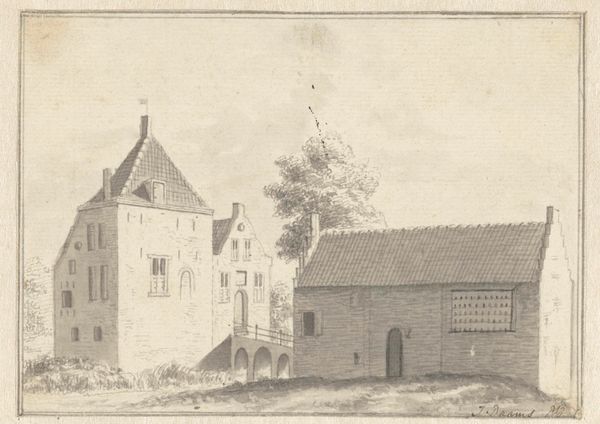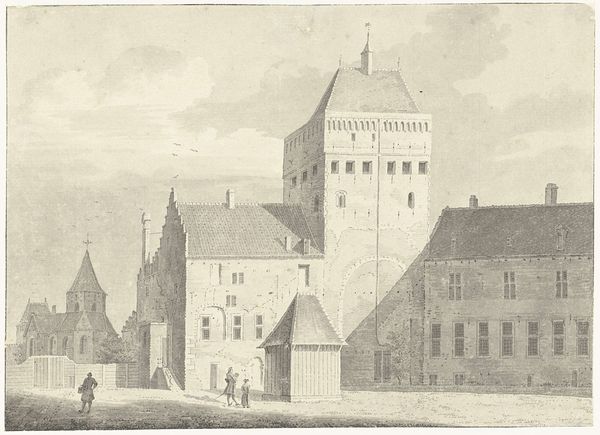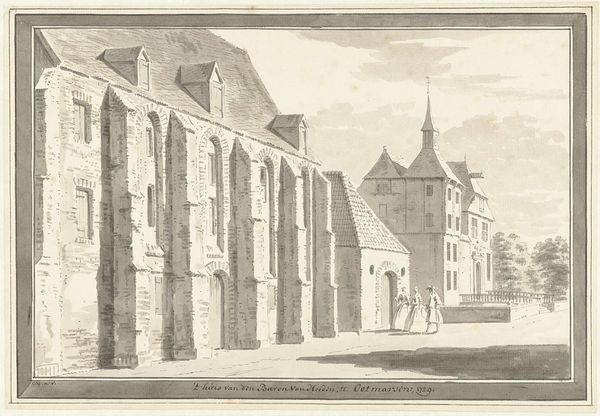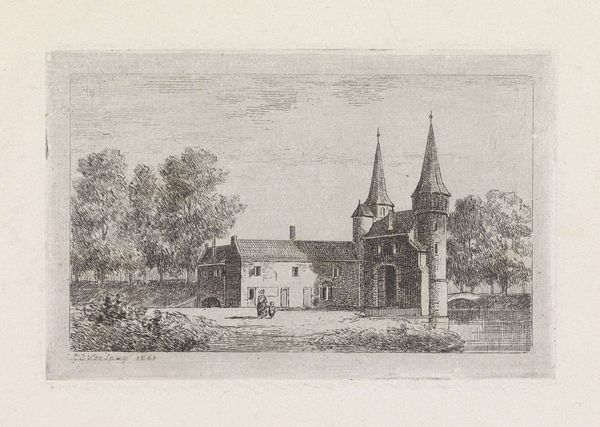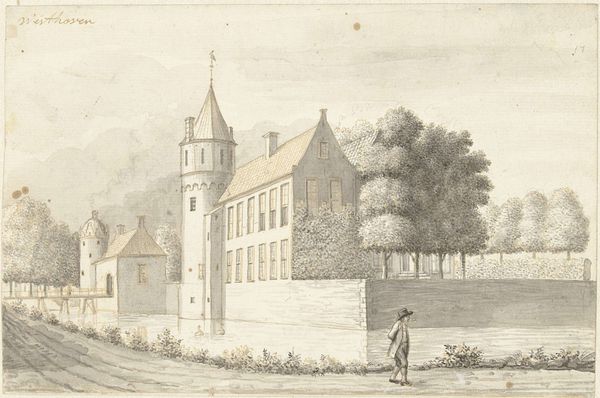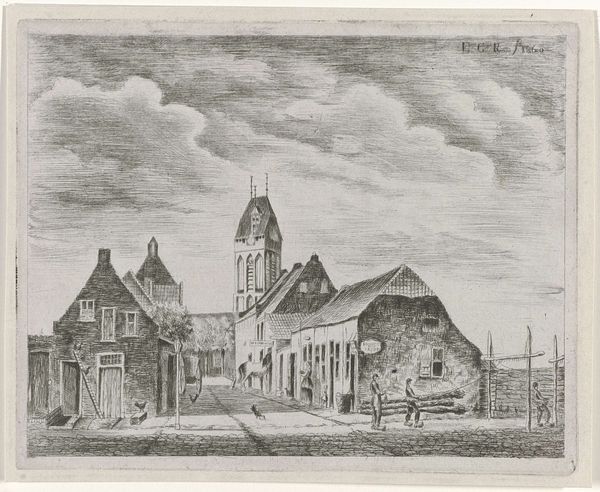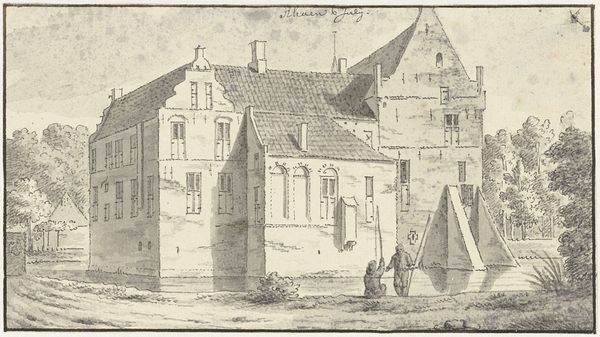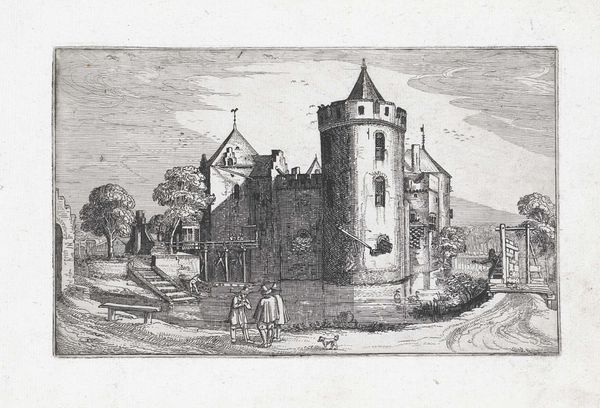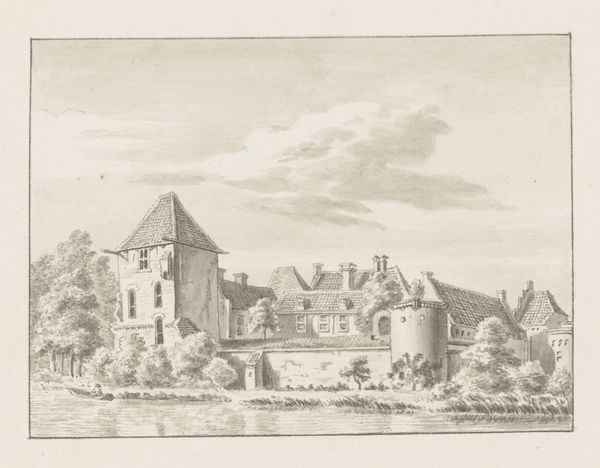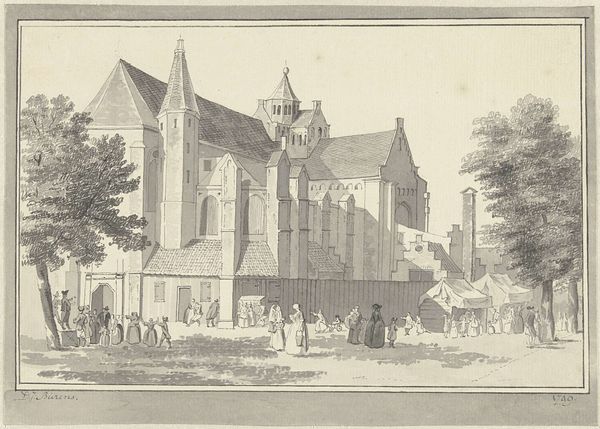
drawing, etching, paper, ink, engraving, architecture
#
drawing
#
dutch-golden-age
#
etching
#
landscape
#
perspective
#
paper
#
ink
#
architectural drawing
#
architecture drawing
#
cityscape
#
academic-art
#
engraving
#
architecture
#
realism
Dimensions: height 204 mm, width 298 mm
Copyright: Rijks Museum: Open Domain
Curator: This delicate work is entitled "View of Nederhorst Castle in Nederhorst den Berg," dating back to 1731, courtesy of Abraham de Haen the Younger. Editor: It's stark, isn't it? That gray wash evokes a real chill, a sense of the mundane almost bordering on melancholic, despite the presence of the castle itself. Curator: Let’s not mistake quiet contemplation for melancholia, perhaps? De Haen offers a glimpse into Dutch Golden Age landscape art through the lens of precise drawing and etching. This piece exemplifies academic art in its commitment to realism, especially regarding perspective and architectural detail. Editor: Realism in 1731 meant portraying class and status. I mean, look closely, we are given not only a perspectival construction of power through this architecture but we’re being presented a very constructed image through the modes of its making. How was this etching commissioned, reproduced, distributed? Whose gaze are we seeing this through? Curator: These are precisely the critical dialogues we need! The perspective, rendered meticulously with ink on paper, guides our gaze toward the castle as a seat of power within its social ecosystem. One must consider Dutch society’s structure then: trade, land ownership, social mobility, class division. How does this resonate with the architecture presented? Editor: We should linger on the medium as a site of cultural consumption itself, particularly concerning depictions of landscape and place. Ink on paper was itself traded, produced through human labour, sold. Can we discuss it absent of broader socio-economic production? It presents challenges. Curator: True, considering those details allows a fuller comprehension. Understanding the context provides deeper resonance. Editor: Absolutely. Bringing such contexts into conversation challenges conventional boundaries of what might constitute high art, demanding attention to labor, materiality and its consumption, prompting reconsideration.
Comments
No comments
Be the first to comment and join the conversation on the ultimate creative platform.
